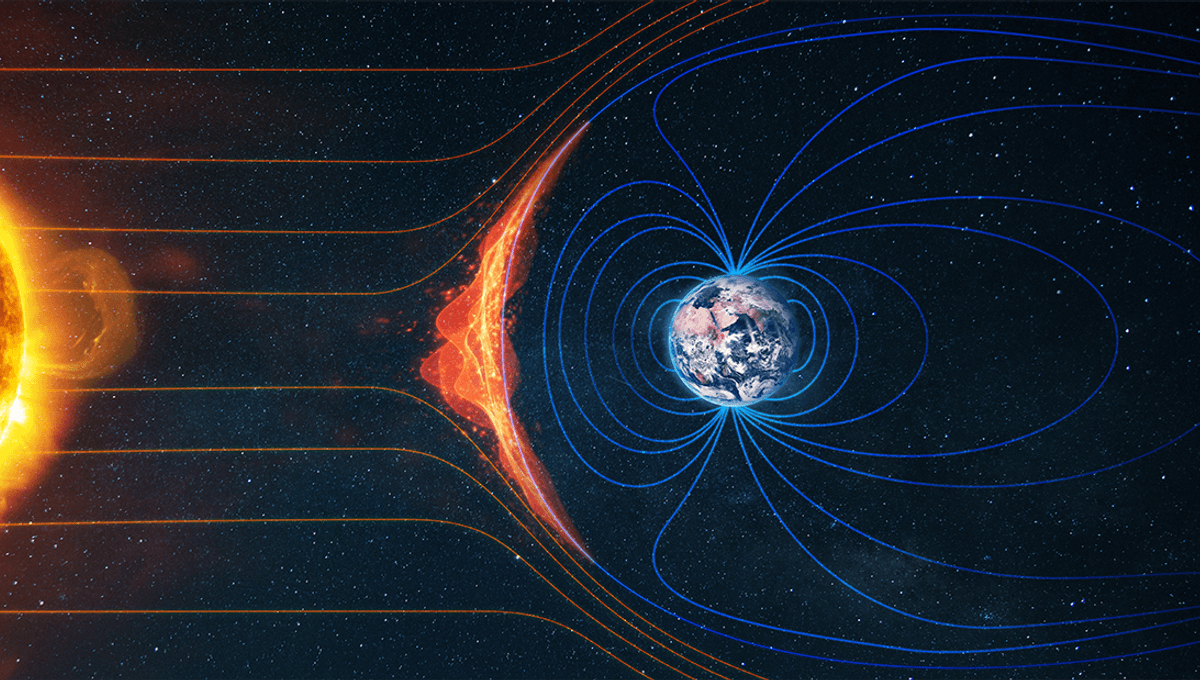
US space agency NASA has outlined lessons that have been learned following the “Gannon storm” of May last year, the most severe geomagnetic storm in over two decades.
On May 9, 2024, representatives of NASA and 30 other US government agencies were gathered at a meeting in order to simulate and workshop potential Earth-based problems resulting from a giant geomagnetic storm. But while they were doing this, the biggest storm in over 20 years was on its way. On May 10, the Gannon storm, named as a tribute to leading space weather physicist Jennifer Gannon, hit Earth.
“The plan was to run through a hypothetical scenario, finding where our existing processes worked and where they needed improvement,” Jamie Favors, director of NASA’s Space Weather Program at NASA Headquarters in Washington, explained in a NASA statement one year on. “But then our hypothetical scenario was interrupted by a very real one.”
During that storm, scientists had the opportunity to study a big geomagnetic storm and its aftereffects for real.
Thanks to NASA’s Colorado Inner Radiation Belt Experiment (CIRBE), for instance, we now know that the storm gave the Earth two new radiation belts sandwiched between the permanent Van Allen belts.
“When we compared the data from before and after the storm, I said, ‘Wow, this is something really new,’” lead author of a study into the belts, Xinlin Li, said in a statement in February. “This is really stunning.”
These belts, studied over the course of months, appear to have stuck around longer than previous temporary belts. Previous electron belts have lasted around four weeks, but these new belts appear to have more longevity. The outer of the two belts, composed largely of high-energy electrons, persisted for over three months before another storm in June knocked it around and decreased its size, and then a further storm in August shrank it to a small population of electrons. Further study of temporary belts like this could provide insights beyond radiation belts.
“The Gannon storm also rocked Earth’s magnetosphere, the magnetic bubble surrounding the planet,” Mara Johnson-Groh, Miles Hatfield, and Vanessa Thomas explain in the new NASA statement.
“Data from NASA missions MMS (Magnetospheric Multiscale) and THEMIS-ARTEMIS – short for Time History of Events and Macroscale Interactions-Acceleration, Reconnection, Turbulence and Electrodynamics of the Moon’s Interaction with the Sun – saw giant, curling waves of particles and rolled-up magnetic fields along the edge of the CMEs. These waves were perfectly sized to periodically dump extra magnetic energy and mass into the magnetosphere upon impact, creating the largest electrical current seen in the magnetosphere in 20 years.”
As well as causing spectacular aurorae, the storm brought unusually colored aurorae. In Japan in particular, the sky turned a peculiar shade of magenta, rather than the usual red or green.
“During the May 10-11th 2024 superstorm, magenta auroras were observed above Japan instead of the typical red. In this study, we demonstrate that the magenta hue is created by a mixture of red (O) and a blue (N2+) aurora at extremely high altitudes. The blue color originates from the N2+ first negative emission band caused by both resonant scattering of the upwelling molecular ions and heavy particle precipitation during the storm,” a study looking into the phenomenon found.
“Additionally, we show that high solar activity, terrestrial season, and the preheating of the atmosphere all contribute to the occurrence of magenta aurora.”
While you might conclude that what NASA learned from the geomagnetic storm is, essentially, that it “looks pretty”, scientists have been looking at the negative consequences of the Gannon storm. NASA’s GOLD (Global-scale Observations of the Limb and Disk) mission observed the atmosphere as it expanded from the added heat, which pushed nitrogen particles higher above the Earth. As it did so, it helped to end the life of satellites orbiting the planet.
“In orbit, the expanded atmosphere increased drag on thousands of satellites,” the statement explains. “NASA’s ICESat-2 lost altitude and entered safe mode while NASA’s Colorado Inner Radiation Belt Experiment (CIRBE) CubeSat deorbited prematurely five months after the storm. Others, such as the European Space Agency’s Sentinel mission, required more power to maintain their orbits and perform maneuvers to avoid collisions with space debris.”
Negative consequences hit the ground too, with high-voltage lines tripping, planes being forced to take different routes to avoid radiation exposure and communication errors, and GPS-guided tractors straying from their intended paths in the Midwestern U.S.
“Not all farms were affected, but those that were lost on average about $17,000 per farm,” Terry Griffin, a professor of Agricultural Economics at Kansas State University, said. “It’s not catastrophic, but they’ll miss it.”
Meanwhile on Mars, NASA’s Curiosity Radiation Assessment Detector found that the planet was bombarded with a “snow” of charged particles from the storm. According to NASA, if a human had been on Mars at the time they would have been hit by the equivalent amount of radiation as having 30 chest X-rays, something which may need to be taken into consideration for future crewed missions to the Red Planet.
Source Link: The Gannon Storm: What NASA Learned From The Biggest Geomagnetic Storm In Over 2 Decades